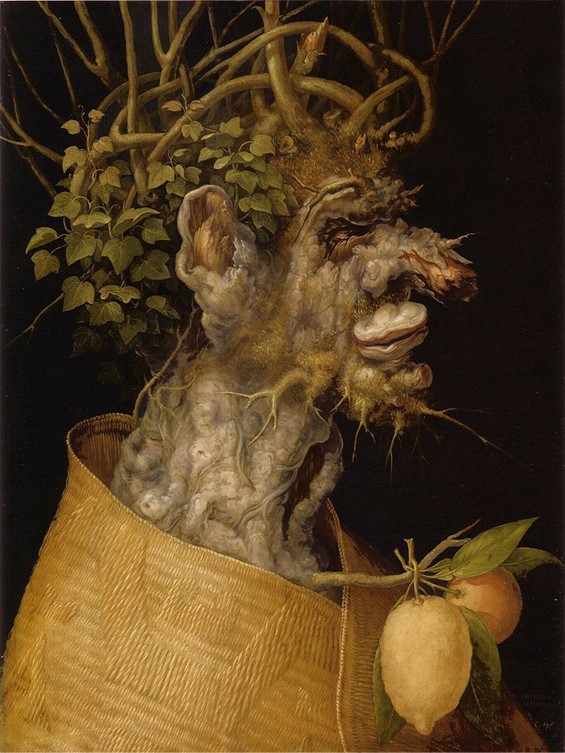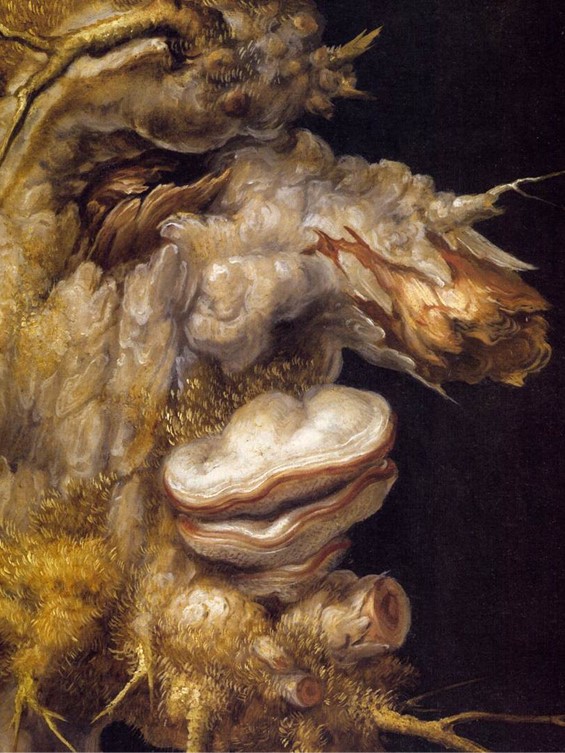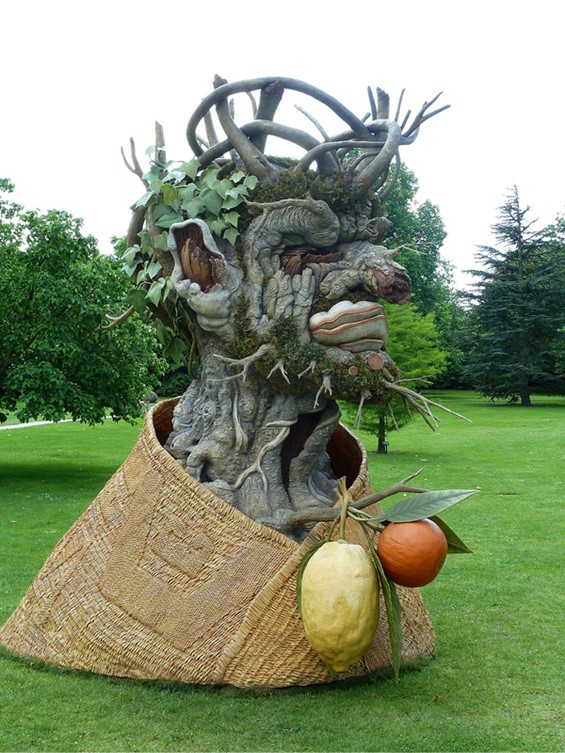
The Four Seasons – Winter, 1563, oil on linden wood, 66,6×50,5 cm, Kunsthistorisches Museum, Vienna, Austria
https://commons.wikimedia.org/wiki/File:Arcimboldo_Winter_1563.jpg
Shivering, frozen mid the frosty snow in biting, stinging winds; running to and fro to stamp one’s icy feet, teeth chattering in the bitter chill. / To rest contentedly beside the hearth, while those outside are drenched by pouring rain. / We tread the icy path slowly and cautiously, for fear of tripping and falling. / Then turn abruptly, slip, crash on the ground and, rising, hasten on across the ice lest it cracks up. / We feel the chill north winds coarse through the home despite the locked and bolted doors… / this is winter, which nonetheless brings its own delights. This is Antonio Lucio Vivaldi’s (1678 – 1741) Sonnet L’Inverno (Winter). The great composer wrote it as a descriptive accompaniment, experts believe, for the music of his “Four Seasons.” Today the first day of Winter, I took the time to listen, read and look at Winter by Giuseppe Arcimboldo! It was a magical time! https://www.charlottesymphony.org/blog/vivaldis-four-seasons-poems/
Arcimboldo’s friend, the Milanese art critic, and travelogue author, Paolo Morigia writes for him… This is a painter (Arcimboldo) with a rare talent […] having proved his worth both as an artist and as a bizarre painter, not only in his own country but also abroad, he has been given the highest praise, in that word of his fame has reached the Emperor’s court in Germany.” The “court” Morigia refers to, is the court of the Habsburg rulers in Vienna first, where Arcimboldo moved in 1563 at the age of thirty-six, and Prague later, where he served as court painter for twenty-five years. https://www.theartstory.org/artist/arcimboldo-giuseppe/life-and-legacy/#biography_header and file:///C:/Users/aspil/OneDrive/Blog/Renaissance%20Mannerism/Arcimboldo%20ScoopNGA.pdf
While in Vienna, to celebrate the reign of Emperor Maximilian II, Arcimboldo created his “ signature Portraits of the 4 Seasons,” composed of imaginatively arranging elements of nature like plants, flowers, fruits, and vegetables. For each “Portrait” (Spring, Summer, Autumn, and Winter), created in 1563, Arcimboldo combined plants associated with a particular season to form a portrait of that time of year. The series proved extremely popular in the Habsburg court, and Arcimboldo reproduced it several times so the emperor could send versions to friends and important political figures. file:///C:/Users/aspil/OneDrive/Blog/Renaissance%20Mannerism/Arcimboldo%20ScoopNGA.pdf

The Four Seasons – Winter (detail), 1563, oil on linden wood, 66,6×50,5 cm, Kunsthistorisches Museum, Vienna, Austria
https://commons.wikimedia.org/wiki/File:Giuseppe_Arcimboldo_-_Winter_(detail)_-_WGA0809.jpg
Closely associated with Mother Earth, Arcimboldo’s “Winter”, the last in his Four Seasons series, takes the form of a withered old man whose skin is rough and wrinkled and whose craggy features are sculpted out of the folds and cracks in the tree’s bark. “Winter’s” face is fashioned out of a single tree and its parts. Giuseppe Arcimboldo used broken branches, cracks in the tree trunk, abrasions, and swellings. http://omeka.wustl.edu/omeka/exhibits/show/arcimboldo-s-gift–the-fantast/fourseasons/winter
“Winter’s” hair, a mess of twisted branches and small leaves, completes the look at the back part of the head… but the leaves crowning his head are not as bright as the leaves of other seasons’ portraits. Further down, the artist represented the eye as a small blackish split in the log, the ear by a broken small piece of a branch and the nose as a curved stump from a broken branch. “Winter’s” beard is composed of poorly kept, thin roots, and branches, while the mouth is cleverly created by placing two mushrooms just below the nose. https://www.thehistoryofart.org/giuseppe-arcimboldo/winter/
From the neck down the feeling of the composition is different. Clad with a woven mat, “Winter” provides a bit of warmth and the promise of life and renewal beyond the cold. From “Winter’s” chest a thin branch sprouts an orange and a lemon, and the woven mat is there to protect the fruit, provide warmth and get them through the months of winter. Their bright colors provide a small, cheery note to an otherwise dreary portrait, and assure the painting’s viewers that despite the chill, spring is not long behind. http://omeka.wustl.edu/omeka/exhibits/show/arcimboldo-s-gift–the-fantast/fourseasons/winter
For a PowerPoint of the Four Seasons by Giuseppe Arcimboldo, please… Check HERE!
I would like to draw your attention to a modern take of Arcimboldo’s The 4 Seasons paintings… a set of four and a half meters high fiberglass sculptures of the Four Seasons by American artist and filmmaker Philip Haas, created in 2012. Interesting… to say the least! https://crystalbridges.org/blog/the-four-seasons-philip-haas-interprets-giuseppe-arcimboldo/

The Four Seasons – Winter, 2012, fiberglass, H. 4.572 m, first seen in the garden of the Dulwich Picture Gallery, London, UK
https://laughingsquid.com/giant-head-sculptures-representing-four-seasons/